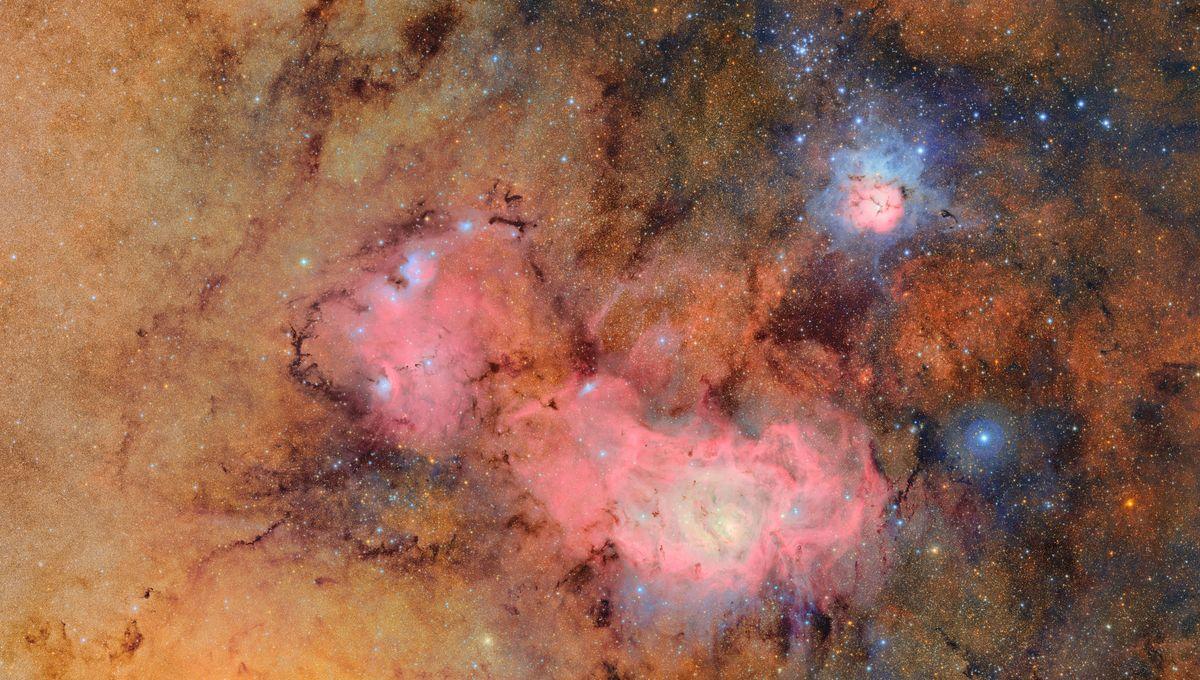The Vera C. Rubin Observatory has officially unveiled its first images, and truly, it is going to be as revolutionary as people expect it to be. Thanks to its incredible eye on the cosmos, which is the largest digital camera in the world, the images are absolutely breathtaking – and we can’t even share the full 1 gigabyte image!
Three images have been revealed so far, with more coming later today via a livestreamed conference. Included in the ones already revealed is a spectacular view of the Trifid and Lagoon Nebulae, star-forming regions located thousands of light-years away in the Milky Way, shown above. The delicate tendrils of gas and dust, filled with delicate details and the countless stars all around them, make this not only a revolutionary scientific image but a clear work of art. And if you like bridges of gas and dust, wait until you see the extragalactic images below. In two images capturing different aspects of the Virgo Cluster, the Rubin Observatory has been able to show how interacting galaxies are linked by these gassy connections before they eventually merge. Galaxies as far as the eye can see, and yet just a small section of the observatory's full view of the Virgo cluster. Image Credit: NSF-DOE Vera C. Rubin Observatory The Virgo cluster is a group of at least 1,300 galaxies, but possibly twice as many, located around 54 million light-years away. In these breathtaking images from the Rubin Observatory, we see the interactions between the members of the cluster as well as countless galaxies located far beyond the extensive group. In the first 10 hours of operation, the Rubin Observatory has captured millions of galaxies, and thousands of new asteroids – with more insights as well as images and video being released later today in the livestreamed event. starting at 11 am ET (3pm UTC). "NSF-DOE Rubin Observatory will capture more information about our universe than all optical telescopes throughout history combined," Brian Stone, performing the duties of the NSF director, said in a statement. "Through this remarkable scientific facility, we will explore many cosmic mysteries, including the dark matter and dark energy that permeate the universe." The images shows the subtle gas tendrils that form when galaxies interact with one another. Image Credit: NSF-DOE Vera C. Rubin Observatory The observatory is named after Dr Vera C. Rubin, the American astronomer whose work was foundational in proposing the existence of a mysterious substance that permeates the universe: dark matter. The observatory will create phenomenal movies of the universe and the most detailed map of the night sky to better understand dark matter, as well as dark energy, the other hypothetical but crucial aspect of our understanding of the cosmos. The camera snaps a 3200-megapixel image – an area of the sky seven times wider than the full Moon – every 40 seconds, with a precision equivalent to seeing a golf ball from around 25 kilometers (15 miles) away. See you later today for more cutting-edge images and science!






